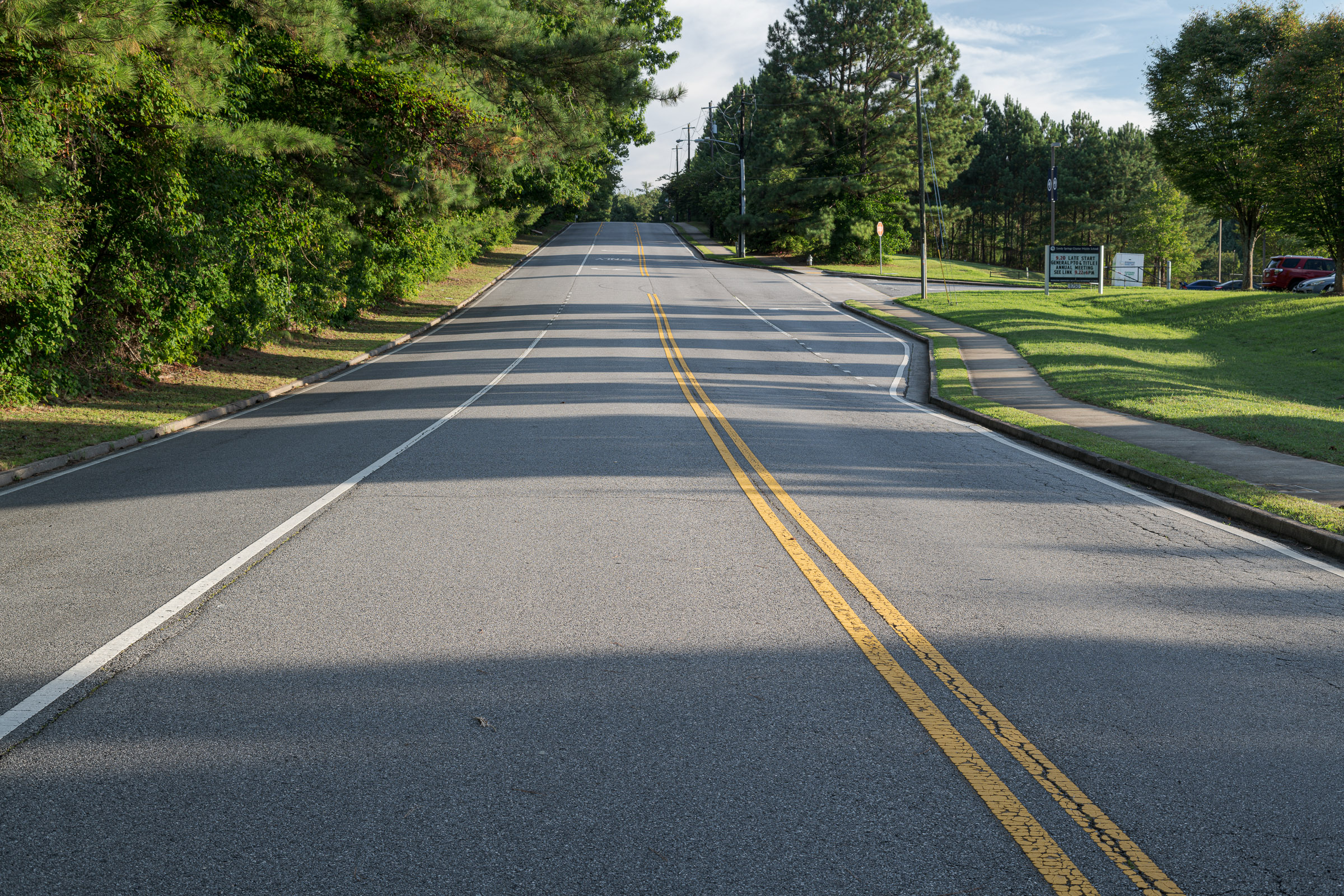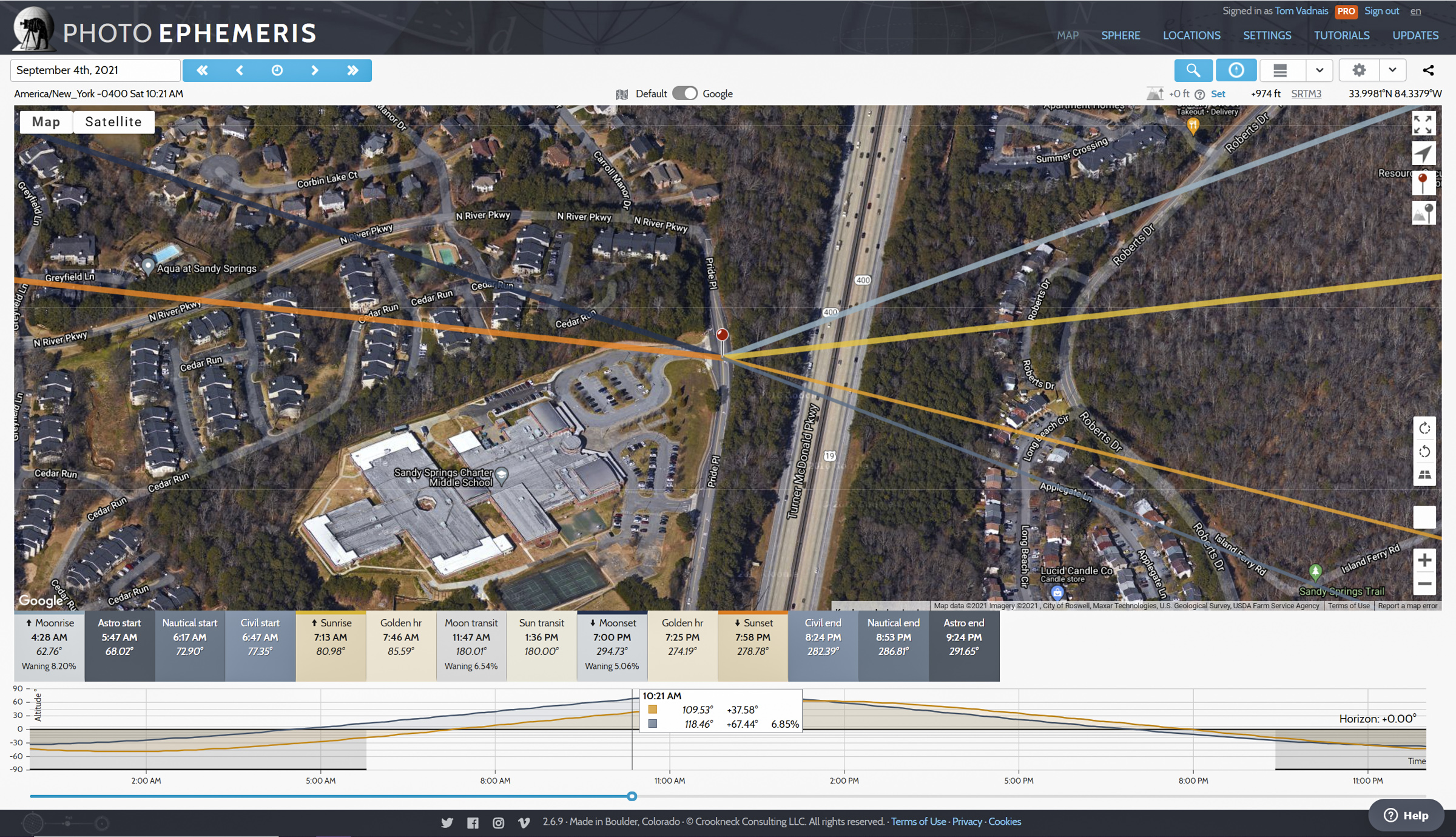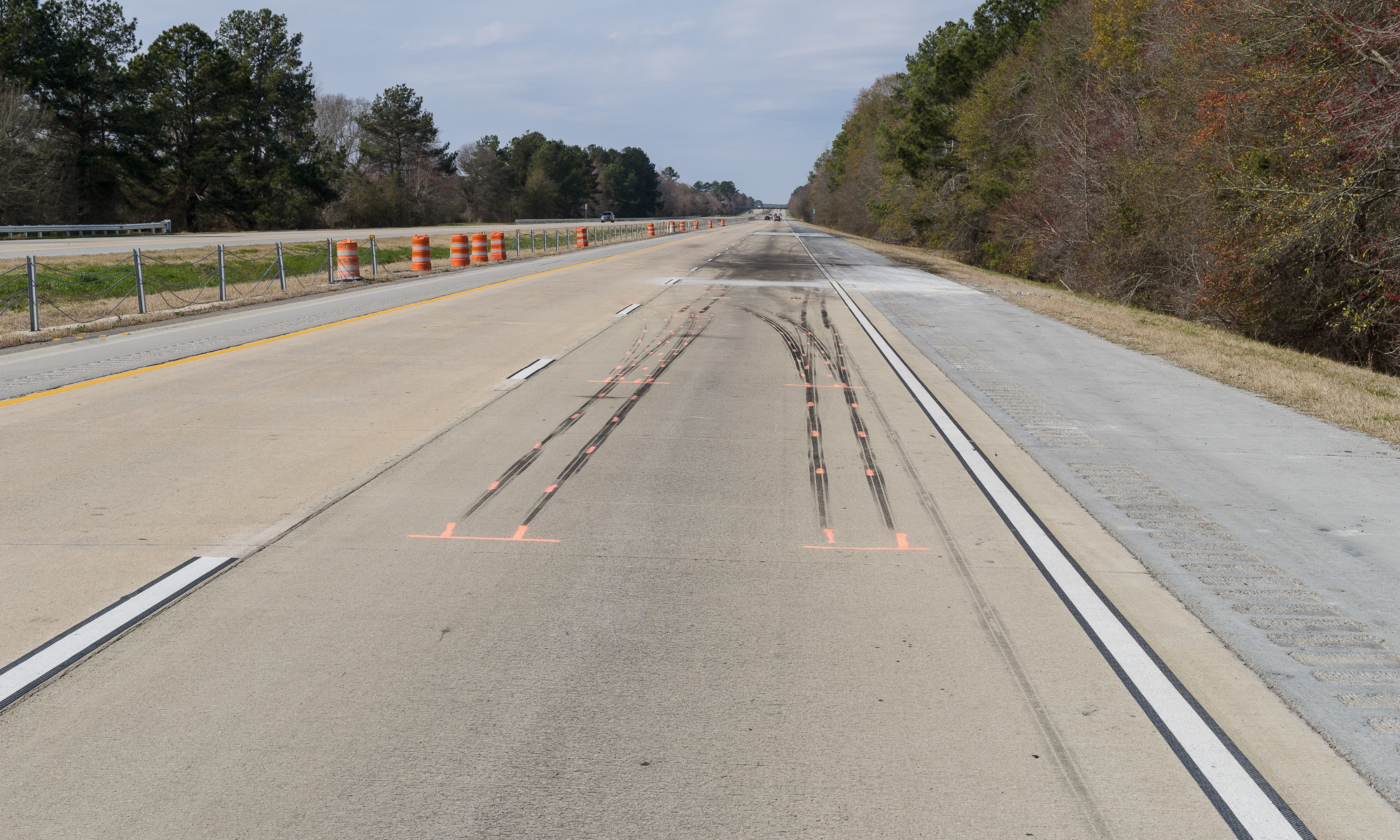While this is hardly news, on sunny or lightly overcast days, the positions and sizes of the shadows of trees, buildings, signs, poles, fences, guardrails, etc., change throughout the day. At certain times, these shadows can make it difficult to clearly show tire marks, paint marks, or gouges in your photographs. The worst is when there is a pattern of light and shadow across your scene.
This first image was made at 10:21 am on a mostly sunny morning. (Click on image to enlarge. Then click back arrow to return to this post.)

This view was made looking south, so the morning sun would have been to left, or east. The dense line of trees on the eastern edge of the road cast a shadow across the entire road with bright spots through the openings in the branches. These bright spots can interfere with details or evidence you might want to show.
Returning to that same scene at 2:45 pm that afternoon, the overcast had burned off. Even though the sun was quite bright, it was at an angle that evenly illuminated a lot more of the road, with only some shadows at the left. (Click on image to enlarge. Then click back arrow to return to this post.)

By late afternoon that day, it had become too overcast for deep shadows, so I went back a couple afternoons later to capture what that scene would look like later on a sunny day. The image below was made at 6:52 pm. (Click on image to enlarge. Then click back arrow to return to this post.)

Those seemingly innocuous trees to the west (right of the photo) were now casting long, separated shadows across the road. These shadows would obviously make it more difficult to show gouges, tire marks, or even paint marks on the pavement.
Time permitting (i.e., it’s not a rapid response), it’s worth checking out where the sun and any shadows would be before you set out to inspect a scene.
For many years, I’ve been using The Photographer’s Ephemeris (TPE) https://photoephemeris.com/en to determine where the sun is going to be in relation to any accident site. (It’s now a subscription service, and well worth the small cost.) It’s extremely valuable if you need to show whether the sun could have been in the eyes of any drivers or witnesses.
And as in this case, it’s also useful for determining when you have the best chance of getting clean site images with minimal shadows. Below are the three TPE screen captures that show what information you get.
The first shows where the sun was when the 10:21 am photo (top one above) was made. (Click on image to enlarge. Then click back arrow to return to this post.)

The line of the sun is shown as the narrow gold line coming in from the lower right toward the pin marking where my tripod had been set up. Note that while the photographs were made looking south, the TPE diagrams have north at the top. So the morning sun in the east will be from the left side in the photos and from the right side in the TPE diagrams. (Just FYI, the wider yellow line at the upper right was the sunrise angle while the wider orange line at the left was the sunset angle.)
This diagram showed that at 10:21 am on 09/04/21, the sun would have been coming in from the eastern side of the road through a thick area of trees, which is exactly what was shown in the top photograph.
At 2:45 pm on the same day, the sun was beyond the thick trees to the east, yet below the tree line to the west. This should result in a photograph with minimal shadows on the road, as the second photo above shows. (Click on image to enlarge. Then click back arrow to return to this post.)

When I went back a couple days later at 6:52 pm, the TPE diagram showed that the sun would now be far enough west that it would come through the line of single trees to the west once the sun got low enough in the sky. Once again, that is precisely what the third photo above illustrates. (Click on image to enlarge. Then click back arrow to return to this post.)

TPE gives both the azimuth and altitude of the sun. In this post, I’m only using the azimuth for direction, and applying a general knowledge of how high the sun will be from experience. For a question about whether the sun was in a driver’s eye, you’ll have to use both azimuth and altitude. That’s a future post.
TPE has many more sophisticated applications, including using AI to show where the sun or moon will be in a scene. It’s well worth getting and exploring all of its features. (I have no ties to TPE nor receive any compensation from them. It’s just a great tool I highly recommend.)
Takeaways:
-1- Before you photograph your wreck site, it’s often worth determining when the sun will cause the fewest or shortest shadows on your road.
-2- The Photographer’s Ephemeris is well worth using when you need to know where the sun will be at specific times on specific dates.
